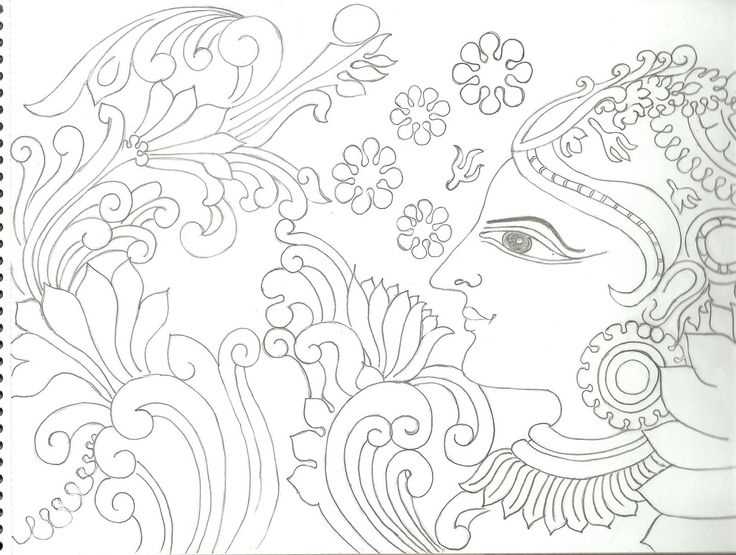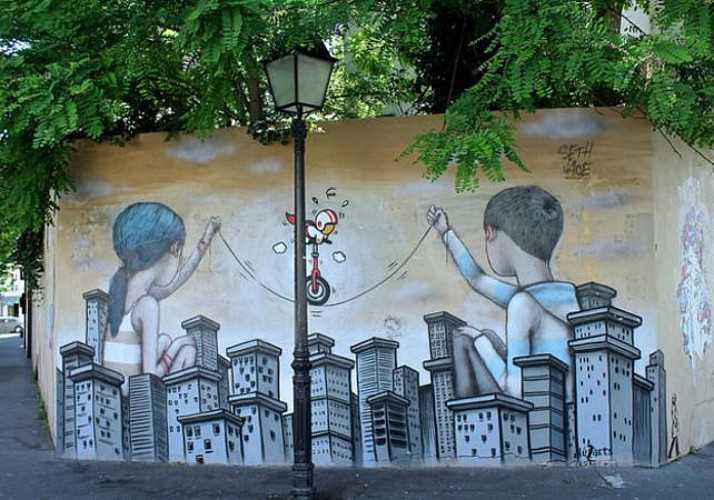When visiting Washington DC, most tourists are eager to explore the iconic landmarks and historical sites that define the city. But what if there was another side of DC, a vibrant and colorful world that often goes unnoticed? Enter the world of Washington DC street art.
From intricate murals that cover entire building facades to hidden gems tucked away in lesser-known neighborhoods, DC is home to a thriving street art scene that showcases the creativity and diversity of the city. Whether you’re a local looking to uncover new artists or a visitor searching for a unique experience, planning a street art tour in DC is a must.
While the street art in DC is constantly evolving, there are a few iconic pieces that have become must-sees for art enthusiasts. The “Love” mural by local artist Kevin O’Neil in Adams Morgan is a fan favorite, while the vibrant works of artist Aniekan Udofia can be found throughout the city. Make sure to add these pieces to your itinerary.
So, if you’re ready to immerse yourself in the vibrant world of Washington DC street art, grab your camera and get ready to explore the city from a whole new perspective. Whether you’re a seasoned art lover or simply looking for a unique way to experience the nation’s capital, DC’s street art scene is sure to leave a lasting impression.
Washington DC has experienced a remarkable rise in street art in recent years. What was once a city known primarily for its politics now also boasts a vibrant and thriving street art scene that is attracting attention from around the world.
Street art has become a powerful form of expression for artists in Washington DC. It is a way for them to communicate their ideas, opinions, and emotions in public spaces. Through street art, artists can engage with the community and spark conversations about important social issues.
One reason for the rise of street art in Washington DC is the increasing acceptance and appreciation of the form. Street art is no longer seen solely as vandalism, but rather as a legitimate art form that adds beauty and character to the city. Local residents and businesses have started commissioning street artists to create murals and installations, further promoting and supporting the art form.
Additionally, social media has played a significant role in the popularity of street art in Washington DC. Artists can now share their work online, allowing a wider audience to see and appreciate their creations. Instagram accounts dedicated to showcasing street art in the city have gained thousands of followers, turning street artists into celebrities in their own right.
Not only does street art bring color and creativity to Washington DC’s urban landscape, but it also serves as a form of cultural expression. Artists often draw inspiration from the city’s rich history and diverse communities, creating art that reflects the unique spirit of the nation’s capital.
With its ever-growing collection of murals, graffiti, and installations, Washington DC has truly become a hub for street art. Whether you’re a local resident or a visitor, exploring the city’s vibrant street art scene is an opportunity to immerse yourself in a creative and thought-provoking world.
Murals: The Grand Canvases of Washington DC Street Art
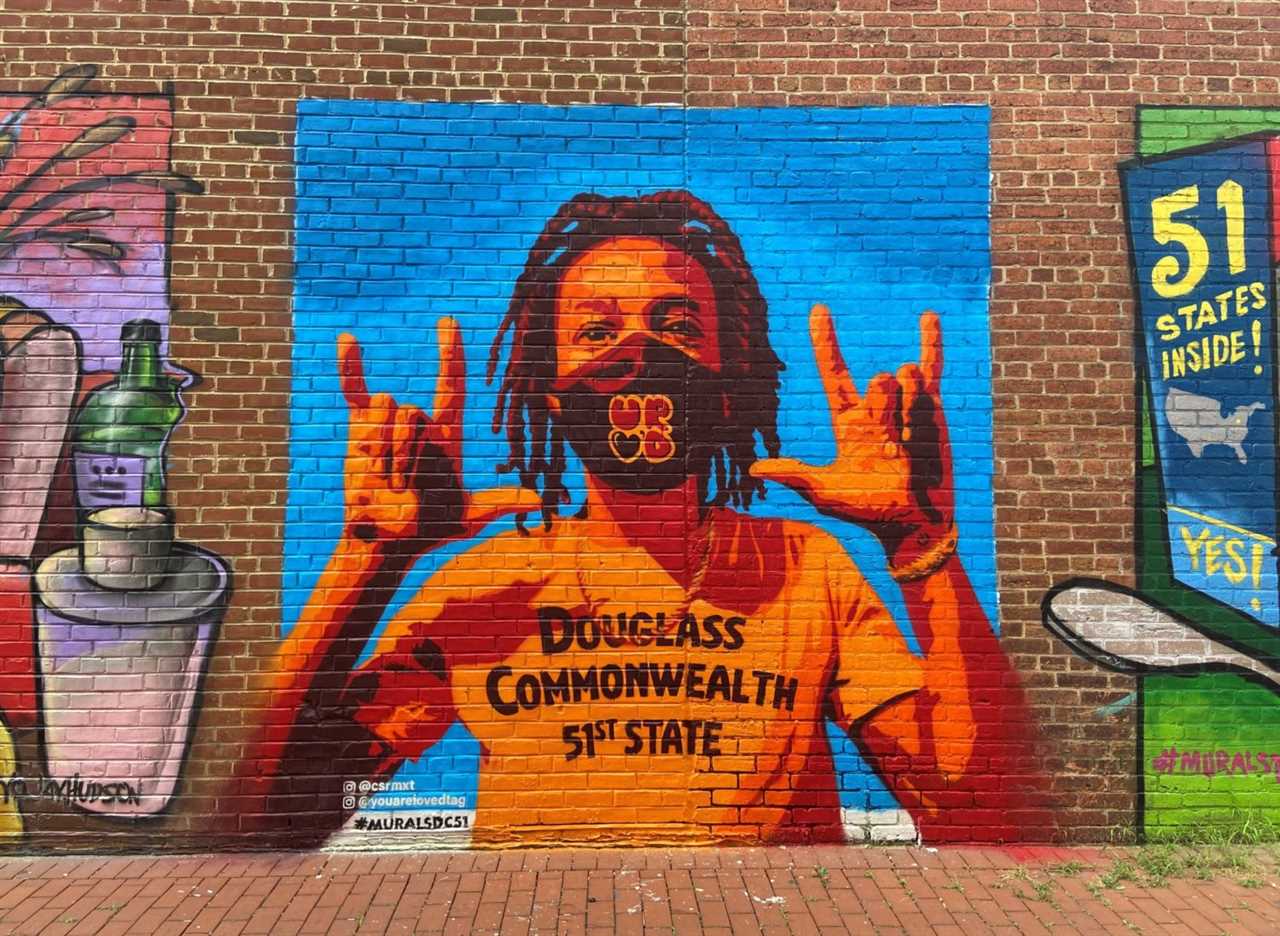
When it comes to street art, Washington DC is a city that truly showcases the power of murals. These large-scale artworks can be found throughout the city, transforming its buildings and walls into grand canvases that tell stories, express ideas, and capture the vibrant spirit of the capital.
The Artistic Process
Creating a mural is no small feat. It involves careful planning, sketching, and collaboration between artists and the community. Many murals in Washington DC are created through partnerships with organizations, businesses, or local residents who provide the space for the artwork to come to life.
Once the location is chosen, the artists begin their work, often using a combination of spray paint and other techniques. They may spend days or even weeks carefully painting each detail, layering colors, and adding depth to the mural. The result is a stunning work of art that adds vibrancy to the surrounding area.
The Diversity of Styles
One of the most fascinating aspects of Washington DC’s street art scene is the diversity of styles and themes represented in the murals. From vibrant abstract designs to realistic portraits and political statements, there is something for everyone to appreciate.
| Style | Description |
|---|---|
| Geometric Abstraction | Artists use basic shapes and colors to create visually striking patterns and designs. |
| Photorealistic | Artists meticulously recreate detailed and lifelike images, often of people or significant landmarks. |
| Social and Political Commentary | Murals serve as a platform for artists to express their views on issues such as inequality, justice, and activism. |
| Nature and Wildlife | Murals celebrate the beauty of the natural world, showcasing animals, plants, and landscapes. |
Visitors to Washington DC can explore these different styles by taking a stroll through the city’s neighborhoods or joining a guided street art tour. Each mural offers a unique perspective and a glimpse into the artistic talent that thrives in the capital.
As you wander through the streets of Washington DC, keep an eye out for these grand canvases of street art. They are not just paintings on a wall; they are a reflection of the city’s vibrant culture, its people, and the stories they have to tell.
Stencils: Making a Statement with Precision
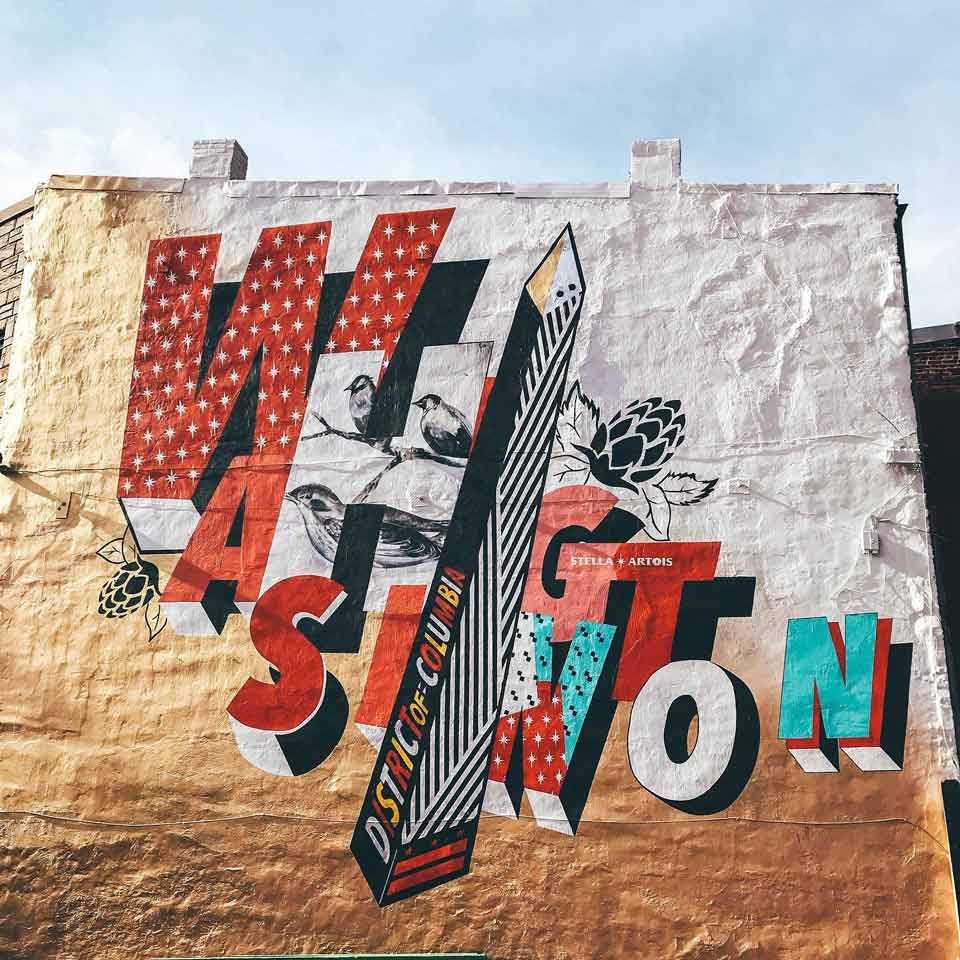
Stencils play a significant role in the world of street art in Washington DC. Artists use stencils to create intricate and detailed designs with precision. This technique allows them to make a bold statement while maintaining control over the outcome of their artwork.
With stencils, artists can replicate the same image multiple times, ensuring consistency and accuracy. Whether it’s a portrait, a political message, or a whimsical illustration, stencils allow artists to quickly and efficiently reproduce their artwork on various surfaces.
One advantage of using stencils is the ability to work on a larger scale. By breaking down an image into smaller sections, artists can easily transfer their designs onto walls, fences, and other outdoor structures. This method ensures that their art can be seen and appreciated from a distance.
Creating Stencils:
When creating stencils, artists typically start with a design or image that inspires them. They then carefully cut out the different elements of the design, creating negative spaces that will become the final artwork.
Materials like cardboard, plastic sheets, or thick paper are commonly used for stencils. Artists use precision cutting tools to ensure clean and accurate lines. This attention to detail is essential to achieve the desired effect when the stencil is applied.
Applying Stencils:
Once the stencil is ready, artists secure it to the desired surface using tape or adhesive. They then carefully apply paint or spray paint, either by brushing it on or using an aerosol can. The stencil acts as a guide, allowing the artist to fill in the negative spaces, creating a vibrant and captivating image.
Artists often use different colors, shading techniques, and paint textures to give depth and dimension to their stenciled artwork. This bold and dynamic style of street art catches the attention of passersby and adds vibrancy to the urban landscape of Washington DC.
In summary, stencils provide an effective way for street artists in Washington DC to make a statement with precision. This technique allows artists to replicate their artwork multiple times, work on a larger scale, and maintain control over the outcome. By carefully creating and applying stencils, artists can add a vibrant and captivating touch to the city’s street art scene.
Graffiti: Expressing Rebellion and Individuality
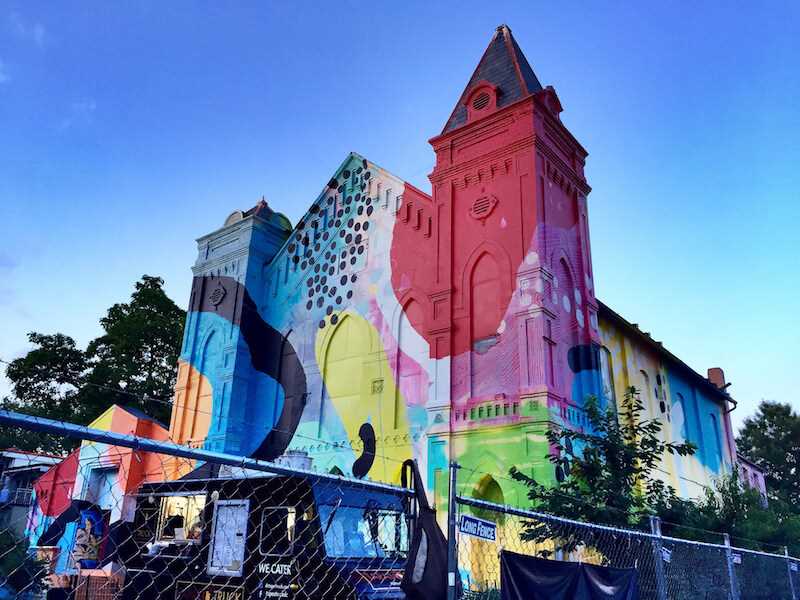
Graffiti has long been associated with rebellion and the individuality of its artists. The streets of Washington DC are filled with vibrant and thought-provoking graffiti that reflects the city’s diverse culture and the passions of its residents.
The Power of Expression
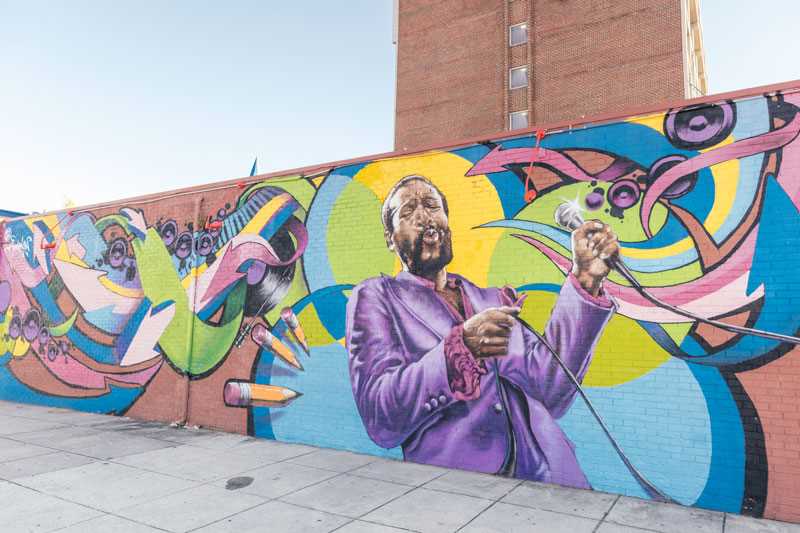
Graffiti artists use their work as a means of expressing their thoughts, emotions, and perspectives on various social, political, and cultural issues. Through their art, they aim to challenge the status quo and spark conversations about topics that are often overlooked or ignored.
Some graffiti pieces serve as a form of protest, addressing issues like racism, inequality, and environmental concerns. Others may focus on personal experiences and struggles, offering a glimpse into the artist’s inner world and the human condition.
Breaking Boundaries
Graffiti allows artists to break free from the confines of traditional art spaces and reach a wider audience. By taking their work to the streets, they reclaim public spaces and challenge the notion of who gets to create and display art.
Street art also has the power to transform neglected areas into vibrant, colorful spaces, attracting attention and revitalizing communities. It can serve as a catalyst for change, inspiring others to think outside the box and question societal norms.
| Mind-Opening Art | Location | Artist |
|---|---|---|
| Gender Equality Mural | U Street | Aniekan Udofia |
| Environmental Awareness Piece | Adams Morgan | Hieronymus |
| Racial Justice Artwork | Shaw | CRISP |
Washington DC’s street art scene is constantly evolving and reflects the ever-changing dynamics of the city. It serves as a visual representation of the voices and experiences of the people who call this vibrant city home.
Street Artists: The Visionaries Behind the Artwork
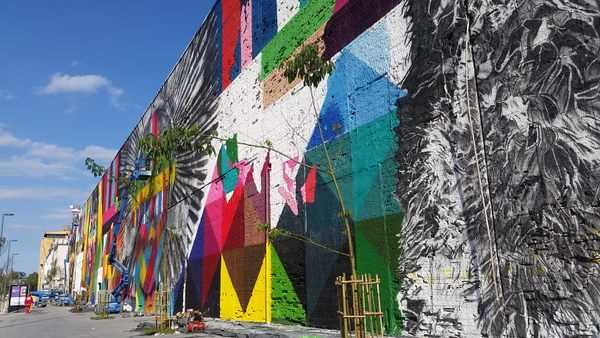
Street art has become a major part of the cultural landscape in Washington DC, and behind the stunning murals and eye-catching graffiti are the talented street artists who bring these creations to life. These visionaries not only have the artistic skill to transform blank walls into vibrant canvases, but they also have a powerful message to convey.
Street artists in Washington DC come from diverse backgrounds and have a wide range of influences. Some have a formal art education, while others are self-taught. Their styles can vary from elegant stencils to intricate wheatpaste, and each artist has their own unique way of expressing themselves through their art.
Many street artists use their work to address social and political issues, bringing attention to topics that may go unnoticed. Their murals often depict powerful messages that encourage viewers to think critically and engage with their surroundings. Street art becomes a medium for social commentary, allowing artists to become a voice for the community.
Furthermore, street artists often work collaboratively, supporting and inspiring one another. They form communities and create spaces where they can freely express their ideas and experiment with different techniques. These creative networks contribute to the dynamic and ever-evolving street art scene in Washington DC.
Unlike traditional art, street art is accessible to everyone and can be enjoyed by anyone who passes by. It brings a sense of vibrancy and energy to the city, transforming public spaces into open-air galleries. The impact of street art goes beyond aesthetics; it fosters a sense of connection and community, making art a part of everyday life.
| Artist | Style | Influences |
|---|---|---|
| John Smith | Stencils | Pop art, political activism |
| Jane Doe | Murals | Street photography, abstract expressionism |
| Andy Lee | Wheatpaste | Asian calligraphy, urban culture |
Some notable street artists in Washington DC include John Smith, known for his thought-provoking stencils influenced by pop art and political activism. Jane Doe is renowned for her vibrant murals, inspired by street photography and abstract expressionism. Andy Lee’s wheatpaste art combines elements of Asian calligraphy and urban culture.
So the next time you stroll through the streets of Washington DC, take a moment to appreciate the incredible artwork that adorns the city’s walls. Behind each piece is a visionary artist who is making a statement and shaping the vibrant world of street art in the nation’s capital.
Expression through Spray Paint and Tags
One of the most vibrant forms of art found in Washington DC is street art, specifically the works created through spray paint and tags. These forms of artistic expression can be seen throughout the city, adorning walls, buildings, and other surfaces.
Spray paint allows artists to create bold and colorful pieces with ease. The medium is versatile and offers a range of possibilities. Artists can create intricate murals, abstract designs, or even portraits using spray paint cans. The vibrant and eye-catching nature of these works of art adds a unique touch to the urban landscape of Washington DC.
Tags, on the other hand, are a distinct form of street art that involves the stylized writing of an artist’s name or signature. These tags can be found on walls, street signs, and other surfaces. While some may view tags as mere graffiti, they are an essential part of the street art culture and represent the individuality and identity of the artists.
- Through spray paint and tags, artists can express their creativity, passion, and opinions.
- They have the freedom to use the city as their canvas, turning ordinary spaces into vibrant works of art.
- Street art provides a voice for artists who may not have access to traditional art spaces, allowing them to showcase their talent and perspective.
- Additionally, street art adds a vibrant and dynamic element to the city, making it an exciting and visually stimulating place to explore.
Washington DC is home to a thriving street art scene, where artists from all backgrounds come together to create a vibrant and expressive urban environment. Whether it’s a large-scale mural or a small tag hidden in an alley, each piece contributes to the rich tapestry of street art in the nation’s capital.

I am a mural enthusiast and a fervent admirer of street art. Rather than creating murals myself, I am passionate about collecting them. My love for street art knows no bounds. I am dedicated to curating and cherishing these artworks that grace the streets. My collection stands as a testament to my profound appreciation for this form of artistic expression.
read about me



